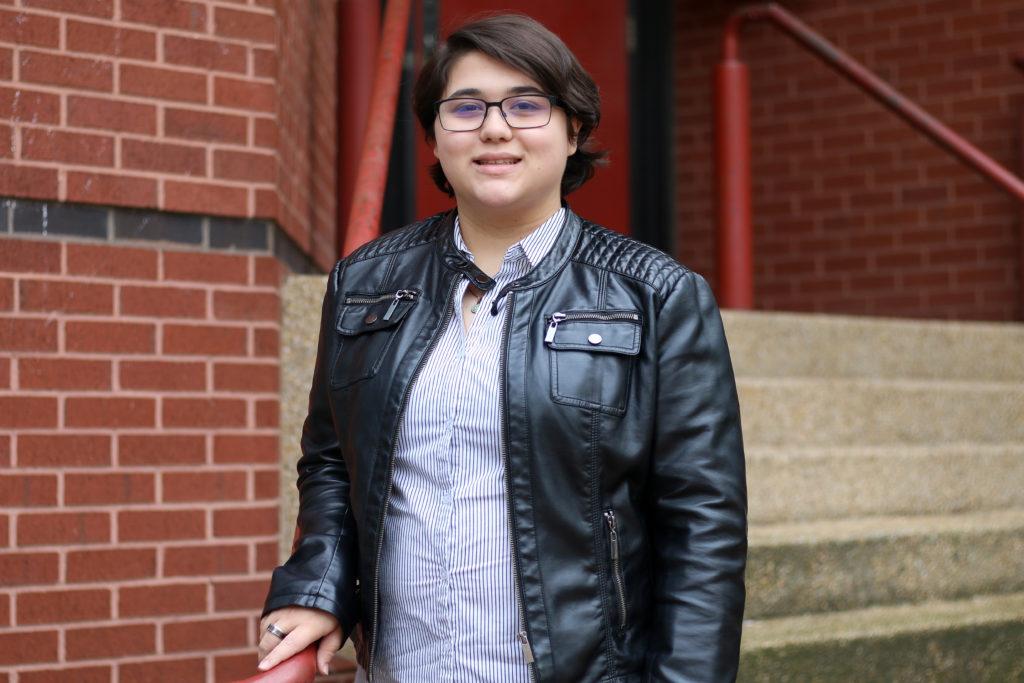A new student group is trying to build connections between Jewish members of the LGBTQ community.
Kehila GW, a student group formed earlier this semester for queer students in the Jewish community, held its first event last weekend when members took a hiking trip to Roosevelt Island. Members said the group, which they plan to register with the Center for Student Engagement over winter break, will give students a safe haven to explore their Jewish and LGBTQ identities.
Jared Bach, a Hatchet opinions writer and the founder of the group, said he started the group after traveling to Israel in June on an LGBTQ-themed birthright trip, a free 10-day trip where Jewish young adults can learn about Judaism and Israel. During his trip he said he “never felt so at peace” with his sexuality and religion and wanted to bring a similar space back to campus.
“Given the large population of Jews and LGBTQ people on our campus, I wanted to find a place where people could feel safe to find themselves and make friends, like I did on this trip,” Bach said.
Sophomore Zachary Bernstein said the group’s weekly meetings consist of “Tea Time Tuesday,” a weekly gathering in the Hillel townhouse that started in September and allow members to “get together and talk about whatever we want to talk about.” The group, which is currently comprised of about 10 students, also held a discussion after a shooting last month in a Pittsburgh synagogue.
“There’s value in exploring the relationship between Judaism and the LGBTQ identity,” he said. “There’s value between simultaneously learning and exploring our relationship to both those aspects of who we are.”
The name of the organization also plays an important role for the group’s ultimate goal of inclusivity, he said. “Kehila” is a Hebrew word that means “community,” which is what the group hopes to establish for students who identify as LGBTQ and Jewish, he said.
“There are a lot of times where it’s nice, as members of the queer community, to get together and talk about issues that may be affecting us,” Bernstein said. “There are some very nice organizations like that on campus, but none for the Jewish community.”
In an attempt to reach more potential members, Bernstein said the organization has a weekly newsletter listing events for LGBTQ Jewish students and allies. The group also utilizes a Facebook page that members of the group use to communicate and recruit more members.
Freshman Chava Kornblatt, a member of the group, said each “Tea Time Tuesday” has a different theme of discussion, like “Is God a woman?” or an analysis of genders mentioned in Jewish texts. She said the group gives students a place to discuss the intersection between political, social and cultural aspects of their identities.
“I come from a very small town, so having the ability to not just have to worry about trying to find people who I have that overlap with is what I was looking for,” she said.
Senior Adam Graubart said the group is a means to discuss current events and members’ own struggles and triumphs with their Jewish or LGBTQ identities, Graubart said.
While the organization does not have concrete plans for the next semester, members took their first outing Sunday to Roosevelt Island with a student organization at American University, Graubart said.
“People have talked about family experiences they found challenging,” he said. “Just getting to know new people on campus that share both of these identities but come to it with a different perspective has allowed people to learn about themselves and others in really constructive ways.”
Graubart also said members are brainstorming more events, like movie or TV show watch parties including “queer or Jewish themes.” Members are also considering studying a Jewish text and analyzing how the text identifies queerness in Judaism, he said.
“One thing that’s important to note is at different times in their histories, both queer people and Jewish people have existed as outsiders who’ve been able to contribute to society in unique ways as a result of their outsider status,” Graubart said. “I think that is a really powerful legacy to carry, especially when you have both of those identities.”




